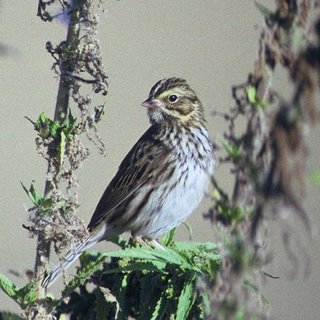News and links about birds, birding, and the environment.
- New research suggests that migratory songbirds use polarized light from the sun to calibrate various other directional cues, including the Earth's magnetic field. Researchers placed captured Savannah Sparrows in funnel cages and reversed the apparent magnetic field. Those sparrows that had a view of the horizon were able to recalibrate their internal compass, while those whose view was blocked were not. Use of polarized light makes sense since songbirds migrate mainly at night, and the bands of polarized light are most intense at dusk and dawn.
- A new study indicates that the Greenland ice sheet is melting three times as fast as previously measured. This suggests that the corresponding rise in sea level may become a problem sooner than thought. Cold fresh water entering the ocean could affect the North Atlantic Current as well. A second paper questions predictions of increased snowfall in Antarctica.
- Illinois has its first pair of trumpeter swans breeding in the wild since the nineteenth century. At least one member of the pair was hatched at the Lincoln Park Zoo and released as part of a captive breeding program.
- An oil spill in British Columbia has fouled at least 100 Canada Geese, but cleanup crews have been unable to catch them so far.
- This article describes a turf war between a great blue heron and some gulls.
- Here is an article on a night heron sighting.
- Cormorants may not have the harmful effect on fish populations that some anglers have claimed.
- Here is a piece on hummingbird clearwing moths.
- A brown booby has been sighting near Virginia Beach; this species is very rare in the Mid-Atlantic.
- The ABA has a new president and board chair: Richard Payne and Bettie Harriman.
- The latest Carnival of the Vanities is up at Humantide.
- Friday Ark #99 includes some leftover posts from last week.




